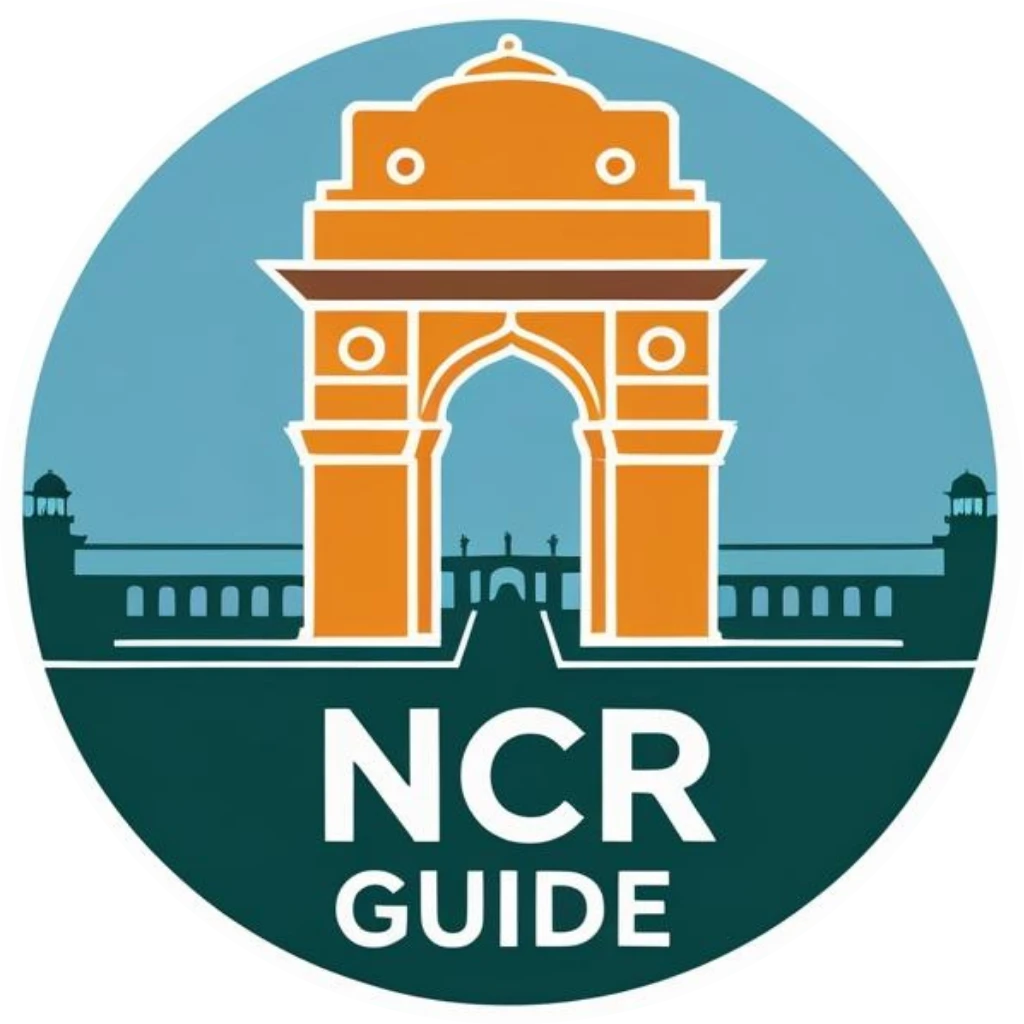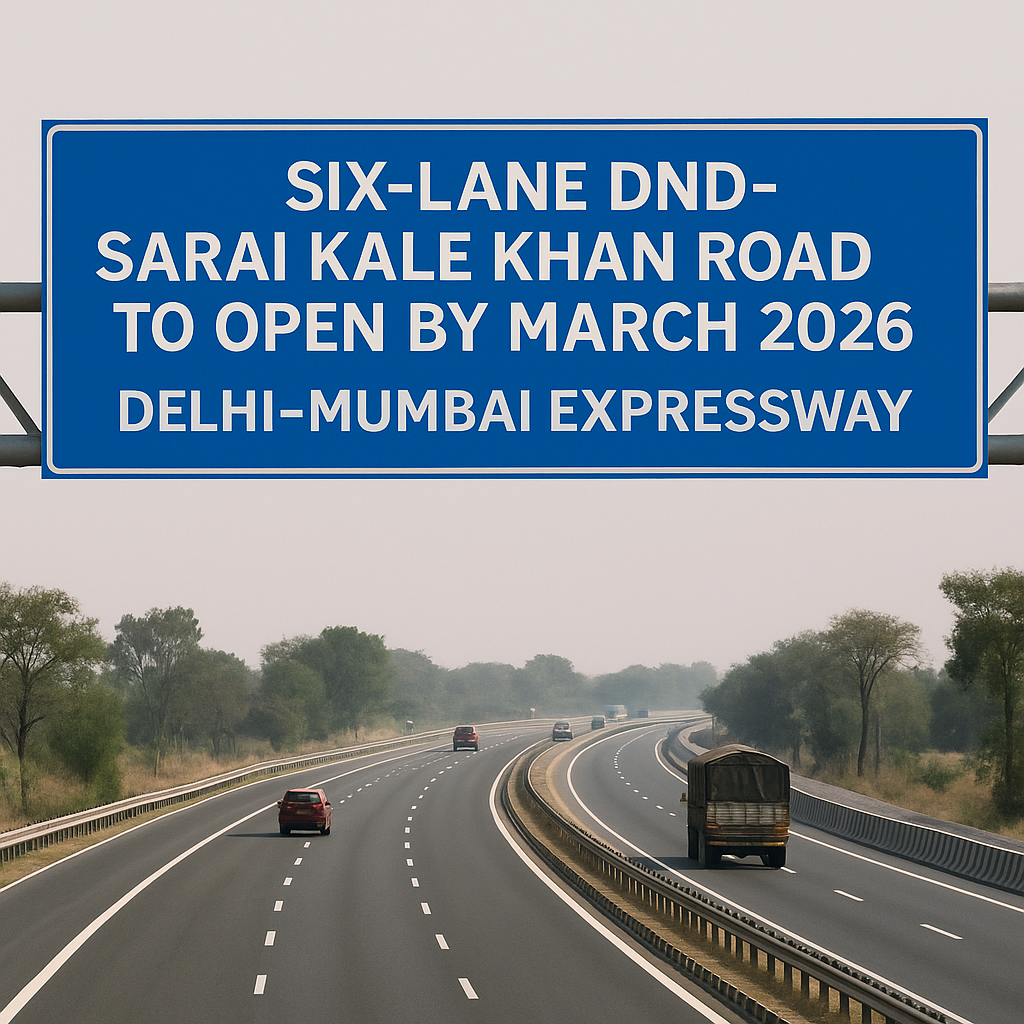Delhi’s notorious traffic bottlenecks near the DND Flyway and Sarai Kale Khan may soon be a thing of the past. A new six-lane corridor connecting DND Flyway to Sarai Kale Khan, part of the Delhi–Mumbai Expressway, is expected to be completed by March 2026. The project, once finished, will be inaugurated by Prime Minister Narendra Modi and is set to redefine how commuters move through South and Central Delhi.
A Critical Link in Delhi’s Expressway Network
The DND–Sarai Kale Khan stretch will serve as a direct connector between South Delhi and the Delhi–Mumbai Expressway, forming the missing link in India’s longest expressway corridor.
Once operational, the new stretch will:
- Ease traffic congestion along Ashram Chowk, DND Flyway, and Ring Road.
- Reduce travel time between Delhi, Noida, Faridabad, and Gurugram.
- Improve freight movement and reduce transport bottlenecks.
- Provide a smoother transition from Delhi’s city roads to the national highway grid.
This connection is vital because it will tie the national capital to a 1,386-kilometre expressway that runs through Haryana, Rajasthan, Madhya Pradesh, and Gujarat before reaching Mumbai — a route designed to cut travel time between the two metros by nearly 12 hours.
Progress and Project Timelines
According to the National Highways Authority of India (NHAI), construction work is progressing steadily, with completion targeted for March 2026. The new corridor is being built to expressway-grade standards with improved drainage, pedestrian infrastructure, and urban landscaping.
Once opened, it will become Delhi’s main urban entry and exit point for the Delhi–Mumbai Expressway — giving commuters direct access to the capital’s central districts without adding pressure to overloaded city routes.
Leadership and Key Announcements
The update was announced by South Delhi MP Ramvir Singh Bidhuri during a foundation stone ceremony for a new drainage project along Mathura Road in Badarpur.
The event was attended by Union Minister of State for Road Transport and Highways Harsh Malhotra, senior engineers, and NHAI officials. Bidhuri emphasized that once completed, the new corridor will transform urban mobility, reducing traffic pressure on some of Delhi’s busiest intersections and improving access to industrial and residential clusters across the NCR.
Complementary Infrastructure Being Developed
The expressway expansion is part of a broader network upgrade in South Delhi and adjoining regions. Supporting infrastructure projects currently underway include:
- A new pedestrian overbridge linking Delhi and Haryana to improve safety.
- Drainage and road widening along Mathura Road and Badarpur.
- Feeder road alignments connecting local residential areas and business hubs to the new corridor.
These parallel projects ensure that when the DND–Sarai Kale Khan link opens, it will integrate seamlessly into Delhi’s existing transport ecosystem.
Why This Stretch Will Matter to Delhi NCR
This link isn’t just another city road — it’s the gateway that completes Delhi’s connection to India’s flagship expressway.
Key outcomes expected after completion include:
- Direct connectivity from South Delhi to the Delhi–Mumbai Expressway.
- Reduced congestion around Ashram, DND, and Ring Road.
- Faster movement of goods between Delhi and western India.
- Cleaner traffic flow and reduced vehicle emissions.
Urban mobility experts believe the project will significantly improve the city’s road efficiency while reducing vehicular load on major intersections.
How It Changes Everyday Commutes
For daily commuters, the impact will be immediate. A smoother, signal-free route between DND and Sarai Kale Khan will help cut travel times during peak hours, while improved road geometry will enhance safety for both cars and heavy vehicles.
Residents of South Delhi, Noida, and Faridabad will benefit most — gaining faster access to Central Delhi, the expressway network, and industrial areas in Haryana without navigating high-congestion choke points like ITO or Ashram Chowk.
Looking Toward Completion
If construction stays on schedule, Delhi’s DND–Sarai Kale Khan corridor will be ready for use by March 2026. Once opened, it will not only ease urban traffic but also connect millions of travelers to one of the world’s most advanced highway systems — the Delhi–Mumbai Expressway.
The project embodies a broader shift in India’s transport vision — one that integrates expressways into city networks instead of keeping them at the outskirts. For Delhi, it could mark a turning point toward faster, cleaner, and more sustainable mobility.
FAQs
When will the DND–Sarai Kale Khan road open?
The six-lane DND–Sarai Kale Khan road, part of the Delhi–Mumbai Expressway, is expected to be completed and opened to the public by March 2026, according to NHAI officials.
Who will inaugurate the new DND–Sarai Kale Khan corridor?
Prime Minister Narendra Modi is expected to inaugurate the project once the corridor is completed in 2026.
What is the purpose of the DND–Sarai Kale Khan stretch?
This new link will connect South Delhi directly to the Delhi–Mumbai Expressway, easing traffic congestion around DND Flyway, Ashram Chowk, and Ring Road while improving intercity connectivity.
How will the new corridor benefit daily commuters?
The six-lane road will offer faster, signal-free movement between Delhi, Noida, and Faridabad. It will significantly cut travel time during peak hours and reduce pressure on existing roads.
Why is this stretch important for Delhi NCR?
It’s the final urban link that integrates Delhi with the Delhi–Mumbai Expressway. Once opened, it will improve freight movement, decongest city roads, and make regional travel smoother and more efficient.
Which government agency is building the DND–Sarai Kale Khan link?
The project is being developed and supervised by the National Highways Authority of India (NHAI) as part of the northern extension of the Delhi–Mumbai Expressway.
What supporting projects are being built along this corridor?
New drainage systems, road widening on Mathura Road, feeder roads, and a pedestrian overbridge between Delhi and Haryana are being developed to complement the expressway connection.
How will this project impact Delhi’s traffic and environment?
By diverting heavy traffic from city roads and reducing idling at bottlenecks, the project is expected to reduce air pollution and improve overall traffic efficiency in South and Central Delhi.
What is the length of the Delhi–Mumbai Expressway?
The full Delhi–Mumbai Expressway spans approximately 1,386 kilometers, connecting Delhi with Mumbai through Haryana, Rajasthan, Madhya Pradesh, and Gujarat.

